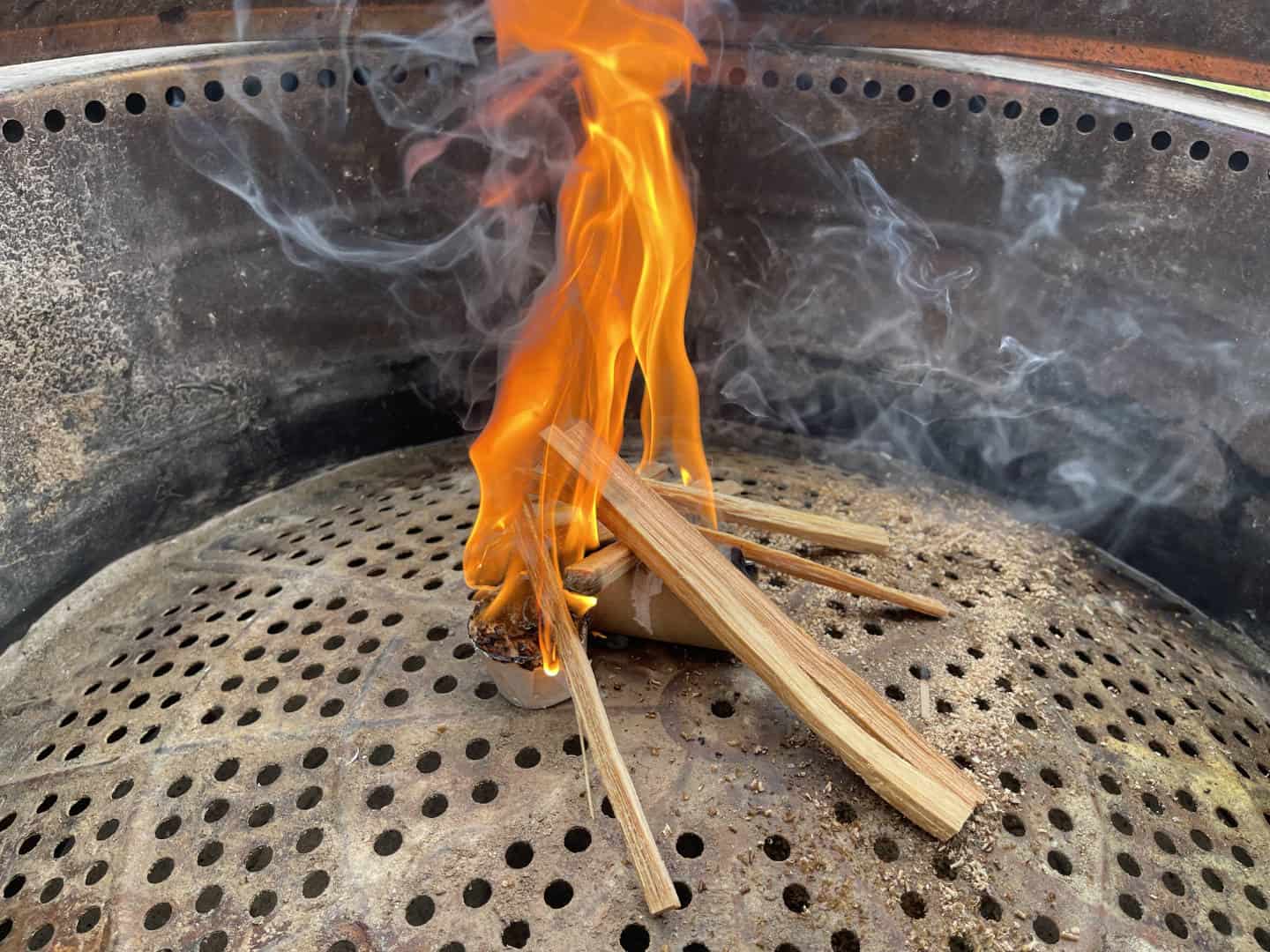When attempting to start a fire, there are typically three time-tested steps to success in most environments. Start with tiny shavings of flammable material known as tinder to produce a small flame. Once you have something burning, you add kindling.
Kindling is slightly larger and thicker than tinder, which helps add body to the fire. After you have a solid foundation for your fire, it’s time to add traditional fuel sources, such as wood. You should gauge how well the size of your material will burn in your fire. Start small and add more as your fire gets larger and hot enough to support denser materials.
Let’s talk about the key differences between Tinder vs Kindling, with some ideal materials to burn at each stage.
Selecting Great Tinder
Tinder is the first step in starting a fire. Sometimes incorrectly interchanged with kindling, tinder has a specific purpose in producing the beginning embers and flames that allow slightly denser materials to combust.
The best tinder comes in the form of highly combustible material that burns hot and fast. Some excellent options commonly found outdoors are dry leaves and grass, finely shaved bark, pine needles, and other yard debris. The general rule for picking tinder that will work well is choosing dry, thin, combustible materials. At a minimum, the entirety of your tinder should stretch to around 5 inches, and you should have enough to fill your cupped hands.
Dryer lint stuffed inside of an empty toilet paper roll serves as a great DIY firestarter.
Kindling Found Around the House
If you know you’ll be starting a fire on your journey you could also bring some useful tinder from home. Here are some efficient tinder sources to consider from around the house:
- Dryer lint
- Potato chips
- Lint from cotton socks
- Sawdust
- Purell hand sanitizer
- Cotton tampon fluff
- Traditional firelighters
Remember, the best kindling is the one you have at hand, so don’t be afraid to improvise and see what works best in your situation.
What Makes Worthwhile Kindling?
Adding kindling to your embers is the next step to producing a great fire. Kindling is denser than tinder and holds more energy.
We use kindling as a bridge between tinder and larger fuel sources such as wood as it is combustible enough to set alight from the smaller embers produced by the tinder but large enough to burn long enough to allow the wood to set alight.
Some of the most popular kindling can be found outside in the form of branches and twigs. If you have the option, choose kindling from a softwood source such as pine to promote splitting and burning within your kindling.
Fatwood sticks make for great kindling. They burn fast, but burn hot and will help raise the temperature for larger firewood. Dry kindling is just as important as dry tinder, although you can split open larger pieces of wood and use the drier material inside as kindling, leaving the wet outer surface to dry for use at another time.
If you don’t readily have access to a wood source for your kindling, you can use paper products such as cardboard or compressed newspaper to replace it.
Doing What Works For You
Following the steps of using tinder, kindling and fuel is the most efficient way to start a fire, but we may not always have the most efficient materials on hand.
It is important to remember you can improvise by turning various types of kindling into tinder by shaving it down and making it smaller. Use this method as a guide and not a hard-and-fast rule and you should be building functional fires in no time.
We recommend Light-A-Fire’s 100% All Natural Odorless Fire Starters
Fatwood sticks combined with these Amazon-bought fire starters make for a great 1-2 combo for getting your fire started.
30 large pods made of all-natural wood shavings and food grade wax. Firestarter doesn't smell or smoke - ideal lighter log for indoor and outdoor use.







